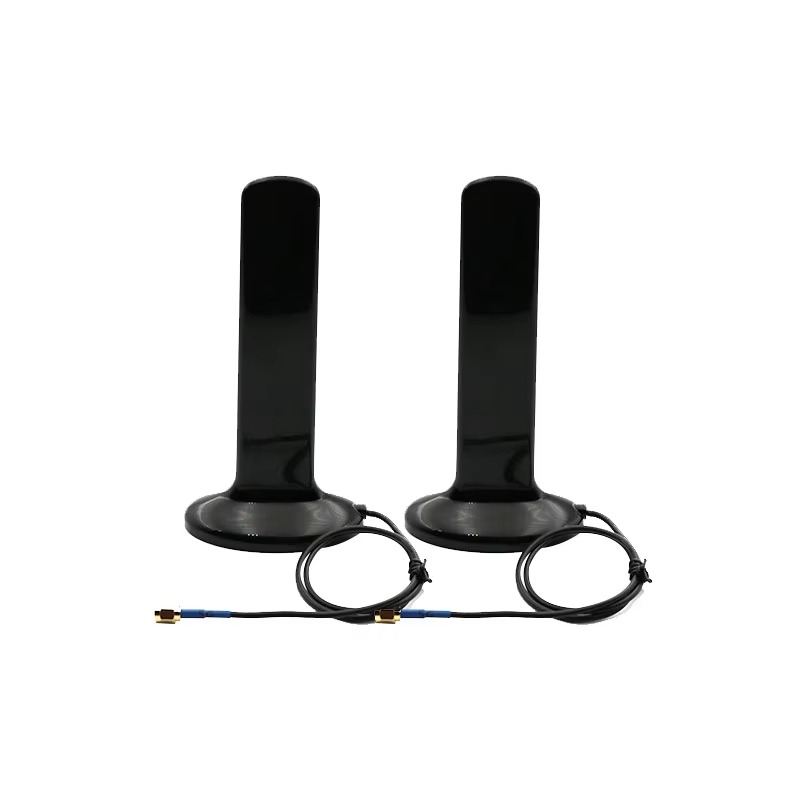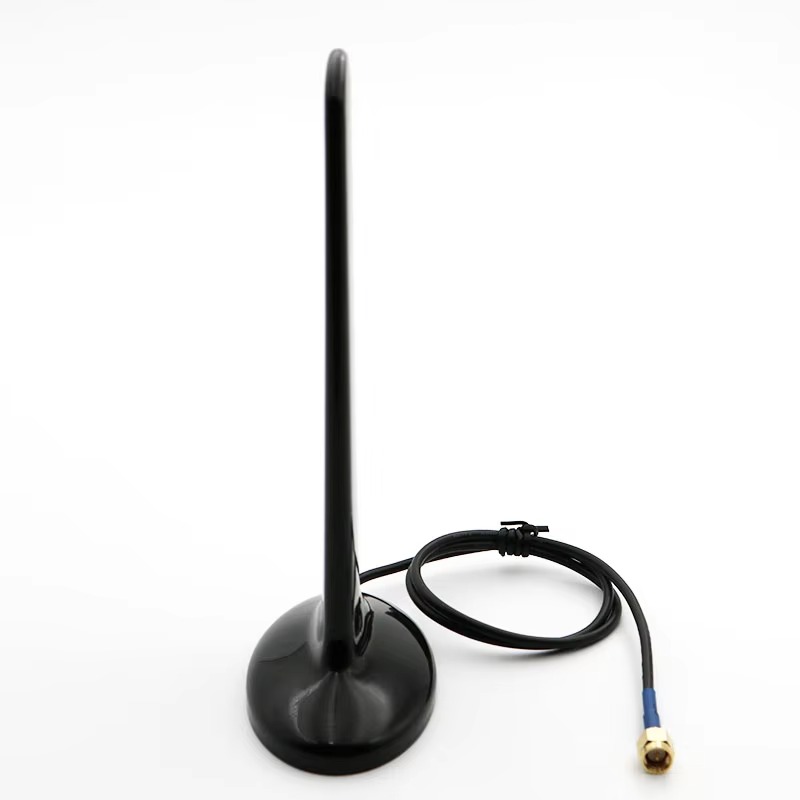The adoption of an embedded 4G WiFi GPS combination antenna module brings a host of significant benefits to OEMs and end-users alike, but it is not a panacea. It introduces its own unique set of challenges and trade-offs that must be carefully evaluated during the product design phase. This section provides a balanced analysis of the advantages and inherent challenges.
Advantages:
Simplified Design and Reduced Time-to-Market: This is the most significant advantage. By using a pre-certified, pre-tested module, OEMs effectively outsource the complex and specialized task of multi-antenna RF design to experts. This eliminates the need for in-house RF expertise, extensive prototyping, and debugging of antenna performance, shaving months off the development cycle.
Space Savings and Miniaturization: Integrating three antennas into one optimized package saves considerable PCB space compared to three discrete antennas, each requiring their own keep-out area. This is invaluable for the design of compact, sleek consumer devices where every square millimeter is contested.
Improved Performance and Reliability: Reputable module manufacturers have rigorously tested and optimized their designs for co-existence and performance across a wide range of conditions. This often results in more reliable and consistent wireless performance than an in-house design attempted by a non-RF specialist company. The integrated LNA for GPS, for instance, guarantees a strong signal, improving location acquisition time and accuracy.
Regulatory Certification Simplification: RF devices must be certified by regulatory bodies (like the FCC in the USA, CE in Europe, and SRRC in China) to ensure they do not cause harmful interference and can operate correctly in the presence of other devices. A pre-certified module can significantly reduce the cost, complexity, and time required for the final product's certification. The OEM's certification process often becomes a matter of verifying that the module is integrated correctly without degrading its performance.
Predictable Performance and Supply Chain: OEMs can rely on the module's published datasheet performance specifications. This predictability de-risks the product development process. Furthermore, sourcing a single module from one vendor is simpler than managing the supply chain for multiple antenna components from different suppliers.
Challenges and Considerations:
The Compromise of Performance: Integration invariably involves compromise. A combination module may not achieve the peak performance of three perfectly designed, optimally placed discrete antennas. For instance, the need to fit a 4G antenna into a small shared enclosure might slightly reduce its efficiency or bandwidth compared to a larger, dedicated antenna. The design is a careful balance of acceptable performance across all functions, not maximized performance in any single one.
Cost: While a module saves on engineering costs, the component itself is typically more expensive than the sum of three simple discrete antennas. The added value of integration, testing, certification, and the included components (LNA, filters) comes at a premium. The cost-benefit analysis must weigh higher unit cost against lower R&D cost and faster time-to-market.
Placement and Integration Constraints: While simpler than a discrete design, the module is not entirely "plug-and-play." Its performance remains highly dependent on how it is integrated into the final product. Its placement on the host PCB, the proximity to other components (especially metals and batteries), and the design of the device's casing all significantly impact its performance. Poor integration can nullify the module's optimized performance.
Thermal Management: The 4G power amplifier, located on the host's mainboard, can generate significant heat during transmission. If the antenna module is located too close, this heat can affect the performance of the antennas and the integrated LNA, as their electrical properties can drift with temperature.
Limited Flexibility and Customization: An OEM is locked into the frequency bands, performance, and form factor offered by the module vendor. If a product requires a unique shape, an extra LTE band, or a specialized radiation pattern, a discrete antenna design might be the only option. Combination modules offer a standardized solution, which may not fit every highly specialized application.
In conclusion, the decision to use a combination module is a strategic one. Its advantages are overwhelmingly centered on efficiency: design efficiency, time efficiency, and certification efficiency. Its challenges revolve around the inherent trade-offs of integration: performance compromise, higher unit cost, and reduced flexibility. For the vast majority of applications where good, reliable, and compact multi-radio performance is required, the advantages far outweigh the challenges.
5. Applications and Future Trends: Pervasive Today, Evolving Tomorrow
The embedded 4G WiFi GPS combination antenna module has found its way into a breathtaking array of applications, becoming the silent workhorse of the connected economy. Its value proposition—providing complete connectivity in a single, reliable package—aligns perfectly with the needs of modern IoT and mobile computing. Simultaneously, the technology is not static; it is evolving rapidly to meet the demands of next-generation networks and applications.
Current Applications:
Telematics and Fleet Management: This is a classic application. Vehicles are equipped with telematics control units (TCUs) that use the GPS for real-time location tracking, 4G to report vehicle diagnostics, driver behavior, and cargo status to a central platform, and WiFi to create a hotspot for occupants or to facilitate wireless updates when in the garage.
Connected and Autonomous Vehicles (CAVs): While advanced CAVs use more sophisticated systems, many connected car features—e.g., emergency calling (eCall), stolen vehicle tracking, and over-the-air (OTA) software updates—are enabled by these robust combination modules.
Smart City Infrastructure: Modules are embedded in smart parking sensors (to detect occupancy and communicate status), smart streetlights (for remote control and diagnostics), and traffic monitoring systems, using GPS for location ID, 4G for backhaul, and WiFi for public access.
Portable Medical Devices: Ambulatory health monitors, mobile dialysis units, and emergency response equipment use these modules to transmit critical patient data in real-time (4G), connect to hospital networks (WiFi), and log location for logistics or emergency dispatch (GPS).
Digital Signage and Kiosks: Interactive kiosks and digital billboards use GPS for time synchronization and location-specific content, 4G as a primary or backup internet connection, and WiFi for local management and content pushes.
Video Surveillance and Drones: Mobile surveillance systems and drones rely on GPS for navigation and geotagging footage, 4G for real-time video transmission from remote locations, and WiFi for high-speed data offloading and local control.
Rugged Tablets and Handhelds: Used in logistics, field service, and public safety, these devices need all three functionalities for mapping, communication, and data transfer in any environment.
Future Trends:
The evolution of these modules is being driven by the rollout of 5G, increased automation, and the need for even greater integration.
Integration of 5G NR: The most significant trend is the transition from 4G to 5G New Radio (NR). Future combination modules will incorporate antennas capable of supporting 5G's sub-6 GHz bands. This requires support for even wider bandwidths, more complex MIMO arrays (e.g., 4x4), and more advanced beamforming capabilities, all within a similarly compact form factor. This represents a massive engineering challenge.
Enhanced Integration (AiP - Antenna-in-Package): The next step is to move beyond a module and integrate the antenna directly into the package of the cellular modem or a dedicated RF chip. This AiP technology promises even greater miniaturization and performance optimization by reducing the length of lossy transmission lines between the IC and the antenna.
Support for More GNSS Constellations and Frequencies: Future modules will support all global navigation systems (GPS, GLONASS, Galileo, BeiDou, QZSS) and multi-frequency reception (e.g., L1 + L5 bands). This significantly improves accuracy and reliability, especially in challenging urban canyon environments, enabling centimeter-level precision for applications like autonomous machinery.
AI-Driven Antenna Tuning: As devices become more complex, static antenna tuning is insufficient. Future modules may incorporate sensors and AI algorithms to dynamically tune the antenna's impedance matching in real-time based on the device's environment (e.g., held in hand, placed on a metal surface, in a pocket). This ensures optimal performance regardless of the use case.
Focus on Ultra-Low Power Design: For battery-operated IoT sensors that need to last for years, future modules will prioritize ultra-low-power reception modes for GPS and discontinuous reception (DRX) for cellular, minimizing energy consumption while maintaining connectivity.
The embedded combination antenna module is thus a technology firmly positioned at the heart of the digital transformation. Its applications will continue to expand as more devices become connected, and its capabilities will rapidly advance to embrace the higher speeds, lower latencies, and greater complexities of the 5G and IoT era.
Conclusion
The embedded 4G WiFi GPS combination antenna module is a quintessential example of technological maturation through integration. It emerged not as a radical invention, but as an elegant and pragmatic solution to a pressing engineering problem: how to pack an increasing number of wireless capabilities into ever-shrinking devices without sacrificing performance, reliability, or time-to-market. It represents the transition of RF design from a specialized, board-level challenge to a commoditized, component-level solution.
This series has detailed the module's journey from its overview as a connectivity nerve center, through the intricate design and construction that manages electromagnetic co-existence, to the distinct working principles of its constituent technologies. We have balanced its compelling advantages—simplified design, space savings, and certification ease—against its inherent challenges—performance compromise, cost, and integration constraints. Finally, we have explored its pervasive applications across industries and the exciting future trends that will see it evolve to embrace 5G, AI, and deeper integration.
In conclusion, the significance of this technology extends far beyond its physical form. It is a key enabler, a cornerstone upon which the modern connected world is built. By abstracting away the immense complexity of RF engineering, it has democratized advanced connectivity, allowing innovators and companies across all sectors to focus on creating new applications and services rather than wrestling with antenna design. It has empowered the creation of devices that are smarter, more responsive, and truly ubiquitous in their communication abilities.
As we stand on the brink of the 5G and AI revolution, the role of these modules will only become more critical. They will need to become more sophisticated, more efficient, and more intelligent, but their core purpose will remain the same: to provide a reliable, integrated, and simple bridge between the physical device and the digital universe. The embedded combination antenna module is, and will continue to be, a fundamental building block for the future of connectivity.




































































 Language
Language
 En
En Cn
Cn Korean
Korean

 Home >
Home > 







 18665803017 (Macro)
18665803017 (Macro)













